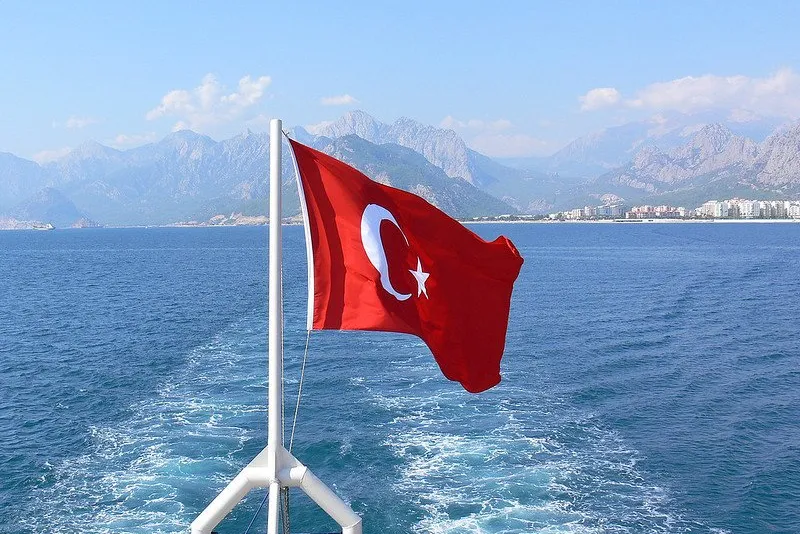Turkey revives offshore wind plans with first auction as soon as next year
Energy ministry expects to initially auction off 1GW, with second auction seen post-2028, president of wind energy association tells Recharge

Turkey last year, according to WindEurope, added 1.3GW in new onshore wind, bringing its cumulative capacity for wind on land to 13.8GW – more than Italy’s and slightly less than that of the UK.
“Our installed capacity is completely onshore, but since 2022, the Turkish Government has changed the gear to also include offshore” wind, the Turkish Wind Energy Association (TWEA) chairman Ibrahim Erden said in a recent interview.
Erden now also cites “insufficient engineering preparations” needed to continue to support investments as a reason the energy ministry at first postponed and later cancelled the auction.
Since then, many things have advanced in Turkey. The country has closed agreements with the Danish Energy Agency and with Germany’s energy ministry to collaborate in the process of developing offshore wind around Turkey. The World Bank is also supporting Turkey's energy ministry by facilitating an EU-backed programme that is focused on the Marmara Sea.
15-20MW turbines
Turkey is well suited for offshore wind due to its geographical location: the country is surrounded by the Aegean Sea to its west (a bay of the Mediterranean), the main part of the Mediterranean to its south, and the Black Sea to its north. The small Sea of Marmara meanwhile, separates the Aegean and the Black Sea close to Turkey's largest city and economic centre, Istanbul.
The auction now expected in late 2026 or early 2027 will have a minimum of 1GW, for turbine sizes of around 15 to 20MW, Erden said.
The timeline for the first auction is still awaiting official confirmation by Turkey’s energy ministry once an ongoing EU-funded site-preparation contract is completed this year or next, TWEA said.
The Turkish energy ministry could either auction off 1GW in a single lot, or two sites of about 400MW and 600MW.
The government has been busy getting the areas ready for auction in order to avoid the lack of preparation that led to the unravelling of its failed 2018 tender.
Helped by some EU funding for candidate countries to join the economic block, the energy ministry in 2023 awarded contracts for floating LiDAR and wave buoy deployments, met-ocean desktop re-analysis, geophysical and geotechnical scoping, and preliminary surveys into birds, marine mammals and fisheries.
Second tender post-2028
If the first auction is a success, the government is planning to hold a second tender post-2028, for which a task force formed between TWEA and the energy ministry is mapping five additional zones in the Marmara and northern Aegean basins.
All zones have water depths of 20-50 metres and will be auctioned on a fixed-bottom basis.
The zones are relatively close to Istanbul, Turkey’s biggest load centre, with some 15 million inhabitants.
While Turkey’s government seeks to diversify its power sources, another reason for going offshore in wind is that the country sees the technology as a “developing investment area” it doesn’t want to be left out of, Erden said.
“Turkey has the necessary industrial infrastructure to benefit from this development… we have wind equipment manufacturers. We are one of the top five manufacturers in Europe for onshore [wind], so we have the necessary know-how,” he explained.
Enercon, Nordex, Siemens Gamesa and GE’s LM Wind Power all have onshore wind production facilities in Turkey.
"We have other complementary industries – shipbuilding, logistics, construction – which can also benefit," Erden added.
The port of Candarli, north of Izmir at the Aegean Sea, could accommodate offshore wind infrastructure, Erden said, pointing to several companies that would like to set up shop there and in Izmir to form an offshore wind supply cluster.
Among them are TPI Composites, which has announced a $100m offshore-blade plant expansion in Izmir to serve future Turkish and East-Mediterranean projects, CS Wind, which has signalled plans to add offshore-tower fabrication capacity at an existing Izmir facility, as well as several Turkish turbine tower suppliers, such as GRI Turkey or Ateş Çelik.
(Copyright)